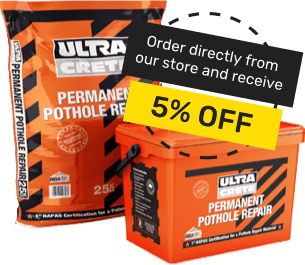With the application of road markings vital for safety, navigational and logistical purposes, it shouldn’t be overlooked that road marking removal is equally as important in the good management of our transport infrastructure.
Road markings are one of the most simple and effective tools we have to reduce accidents, act as a navigational aid and organise the flow of traffic on the world’s roads. They delineate the layout of our roads and give us vital instructions – telling us which lane to take, when to slow down, where we can park and more – forming an integral part of the way our roads work.
A key component in ensuring that road markings remain both useful and legible is being able to remove them fully when they no longer serve their intended purpose. But while many years of wear and tear can make road markings deteriorate, road markings are designed to be permanent, and removing them completely in an efficient and speedy manner requires specialist equipment and expert knowledge.
Removing road markings incorrectly can result in damage to the road surface, which is time consuming and expensive to fix, or result in the shadow of road markings that haven’t been entirely eliminated remaining in place. This can be confusing and unsafe to road users, and lead to people making poor decisions while on the road.
Why We Need to Remove and Replace Road Markings
One of the biggest reasons to remove road markings is through the cumulative impact of traffic and weathering, they become faded and less visible, and need to be removed and reapplied as part of road repair. In fact, the degradation of road markings through processes such as erosion is a continual concern for those tasked with managing our road network.
According to a 2012 LifeLines Report from the Road Safety Marking Association (RSMA), nearly one-third of the length of Britain’s single carriageway A-roads at the time of the report had white lines so worn out that they did not meet recognised standards, which goes some way to demonstrate the ongoing challenging of maintaining our roads.
As drivers tend to “read the road” almost instinctively, it can be easy to underestimate how important something as simple as the white line really is in guiding drivers, avoiding delays, and minimising the risk of head-on collisions – which is particularly true on tight rural roads, where it can be difficult to judge whether two cars can comfortably pass. But whether they consciously note it or not, road markings of all kinds contribute to the thousands of small decisions motorists make every time they are on the road in order to drive safely.
Road markings also need to be replaced in various scenarios, such as roads being updated or widened, the addition of new cycle paths, or an area undergoing change of use. There are also instances where car park bays need to be removed or adjusted, or where floor markings are used outside of the road system, such as in airports.
In these cases, completely clearing any signs of previous markings is important in order not to create uncertainty, and to maintain the clear and appealing aesthetics of the road surface.
The Methods of Road Marking Removal
The way in which contractors will go about removing road markings changes on a case-by-case basis, with each client having individual requirements and preferences. The two most pressing considerations in most projects, are the nature of the road surface and the cost of the work, as clients often operate within tight budgets and must justify spend.
Getting the work done quickly, efficiently and in a cost-effective manner is therefore of primary importance in the removal of road markings, especially as those roads may well be reduced in capacity or entirely out of action while the work takes place.
The three ways in which Hi-Way Services remove road markings (which we believe represent the best options in terms of efficacy and price) include:
Hydroblasting: This method, as well as having an extremely appealing name, is perhaps the best option available for people who need to remove road markings quickly and completely. As removing road markings can render the road in question out of action – leading to great inconvenience and frustration to drivers – the speedy method of hydroblasting is particularly useful in time-sensitive situations, making it a preferred choice for many clients.
So, what does hydroblasting involve? Using specialist vehicles which shoot water at the road surface, hydroblasting is essentially an extremely high-pressure version of a jet wash, where the pressure of both the water hitting the road markings and suction created by the machine eliminate road markings without the need for scraping tools or any chemicals. This makes it particularly suitable for situations where the road surface needs to be preserved as perfectly as possible.
Another, more traditional, method for lifting road markings from the road surface uses heat rather than water to achieve its aims and is known as a thermic lance. In this instance, trained professionals use specialist equipment to “burn off” the road markings with blasts of HCA – hot compressed air that reaches extremely high temperatures. Because of this heat, however, road marking experts can only use this technique on bitumen surfaces, which naturally limits its effectiveness elsewhere.
For concrete or block paved surfaces, scabbling is a popular and budget-friendly option in which a contractor operates machinery fitted with an array small tungsten blades to scrap away road markings. As can be imagined, however, this has an effect on the surface as it is impossible to only remove the paint and leave everything else untouched, even if the effect is limited. This means, for some, scabbling isn’t appropriate, but it can be ideal for other situations.
If you have any questions or would like to learn more about how our team can help you with road marking removal, get in touch today.
